Papers by Elisabetta Cariani

Cancer research, 1988
We investigated insulin-like growth factor II (IGF-II) mRNA in three groups of human liver sample... more We investigated insulin-like growth factor II (IGF-II) mRNA in three groups of human liver samples including primary liver cancers, benign liver tumors and cirrhosis; indeed these pathological conditions would allow us to distinguish between different steps in liver carcinogenesis. A 40- to 100-fold increase in IGF-II mRNA was shown in 9/40 of the liver cancer samples as compared to normal adult liver. RNA blot analysis using both IGF-II cDNA and oligonucleotide probes showed the reexpression of two fetal (6 and 5 kilobases) IGF-II transcripts in primary liver cancers and in some cirrhotic adjacent tissues; these included all the samples with enhanced IGF-II expression. By contrast the adult (5.3 kilobases) IGF-II transcript was identified in most of the benign liver tumors and liver cirrhosis; in addition, in some of these samples, the 5-kilobase fetal transcript was also detected. The increase of IGF-II mRNA in some liver cancers is consistent with an autocrine mechanism conferrin...
Digestive and Liver Disease
Journal of Hepatology, 2007
Hepatitis-associated aplastic anemia (HAA) is characterized by marrow failure developing after ac... more Hepatitis-associated aplastic anemia (HAA) is characterized by marrow failure developing after acute seronegative hepatitis. A patient with agammaglobulinemia developed HAA in association with HBsAg-negative, hepatitis B virus (HBV) DNA-positive acute hepatitis. Sequence analysis showed several substitutions in the major antigenic determinant of HBsAg, potentially affecting the detection by diagnostic immunoassays. Viral mutants may therefore be implicated as etiologic agents of HBsAg-negative HAA. HBV DNA determination may be necessary to exclude mutant HBV as a cause of HAA, particularly in categories at high risk of mutant selection such as agammaglobulinemic and transplanted patients. Ó
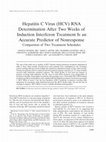
Digestive diseases and sciences, 2001
The aim of this study was to analyze of HCV kinetics during interferon treatment administered dai... more The aim of this study was to analyze of HCV kinetics during interferon treatment administered daily or three times weekly. Seventy-seven naive patients were randomized to two treatment courses starting with four weeks of high-dose interferon administered daily or three times weekly. Twenty-two patients (28.6%) achieved end-of-treatment response and nine (11.7%, four of whom received daily induction) sustained response. The initial decline of viral load was sharper in patients receiving daily induction, but the rates of early RNA clearance were independent of treatment schedule, being higher in patients with genotype non-1. Detectable HCV RNA during treatment predicted nonresponse more significantly than high pretreatment viral load or genotype 1. HCV RNA at week 2 was the best predictor (100% sensitivity in patients receiving daily induction). In conclusion, daily induction increased the HCV decline slope, but not the rate of virological response. HCV RNA at week 2 reliably identifi...
Background: Quantitative real-time PCR assays, which are more rapid and practical than pp65 antig... more Background: Quantitative real-time PCR assays, which are more rapid and practical than pp65 antigenemia determination, are progressively becoming the preferred method for monitoring Human Cytomegalovirus (HCMV) reactivation. However, the relationship between HCMV DNA and antigenemia levels is still under investigation. The aim of this study was to analyse the relationship between HCMV DNA and pp65 antigenemia levels in order to identify clinically useful threshold values for the management of patients.
Liver, 1997
Virological characterization and liver histology in HCV positive subjects with elevated ALT level... more Virological characterization and liver histology in HCV positive subjects with elevated ALT levels normal and Rossini A, Ravaggi A, Agostinelli E, Bercich L, Gazzola GB, Radaeli E, Callea F, Cariani E. Virological characterization and liver histology in HCV positive subjects with normal and elevated ALT levels.
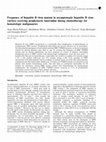
The Hematology Journal, 2004
Hepatitis B virus (HBV) reactivation is a potentially fatal complication of chemotherapy in asymp... more Hepatitis B virus (HBV) reactivation is a potentially fatal complication of chemotherapy in asymptomatic HBV carriers. Prophylactic lamivudine has proven effective for its prevention, but the potential emergence of lamivudine-resistant HBV YMMD mutants, as shown in patients treated for chronic hepatitis, may limit its use. To evaluate the frequency of HBV YMMD mutant and its clinical significance, we have analysed 32 courses of primary lamivudine prophylaxis given to HBV carriers with haematologic malignancies, from the start until 1-5 months after the end of chemotherapy. Lamivudine was used for a median of 6 months (range 2-24 þ ) and median follow-up was 19.5 months (range 5-40). Four episodes of HBV reactivation with mild hepatitis and no evidence of mutant strain occurred after chemotherapy completion and after lamivudine withdrawal. At follow-up YMMD mutant was detected in one patient with normal transaminase levels, who had been on continuous lamivudine for 20 months. In conclusion, among HBV carriers treated with chemotherapy for haematologic malignancies, the emergence of HBV YMMD mutant occurred in 3.1% of prophylactic lamivudine courses and was of little clinical relevance.

Antiviral research, 2015
Interferon Lambda-3 (IFN-λ3) gene polymorphism is associated with spontaneous clearance of hepati... more Interferon Lambda-3 (IFN-λ3) gene polymorphism is associated with spontaneous clearance of hepatitis C virus (HCV) and response to IFN-based therapy (IFN). However, very few data are available about its value in predicting sustained virologic response (SVR) in patients with cirrhosis, and whether IFN-λ3 genotype influences liver disease progression remains unclear. We determined IFN-λ3 genotype by PCR in a cohort of patients with compensated HCV-related cirrhosis, enrolled between 1989 and 1992. Person-years follow-up was calculated for each individual from the date of enrolment to the development of first episode of decompensation, HCC, liver transplant, death or end of follow-up. The follow-up of patients who achieved SVR was censored at the time of IFN initiation. Kaplan-Meier curves and Cox regression analyses were used to assess the association between IFN-λ3 genotype and clinical outcome. IFN-λ3 was determined in 264 patients (52% males, mean age 57±8years, 67% HCV genotype (G...
Transfusion, 1995
Little is known about the prevalence of serum hepatitis C virus (HCV) RNA in blood donors with HC... more Little is known about the prevalence of serum hepatitis C virus (HCV) RNA in blood donors with HCV antibodies and persistently normal alanine amino-'transferase (ALT) levels.

Journal of Virological Methods, 1991
The direct detection of viraemia could improve greatly the efficacy of presently available assays... more The direct detection of viraemia could improve greatly the efficacy of presently available assays. Due to its sensitivity, the polymerase chain reaction represents the method of choice for direct detection of viral nucleic acid, However, the clinical application of this method is hampered by the requirement of hybridization with radioactively labelled probes. In this study we demonstrate that HCV cDNA, amplified by the polymerase chain reaction from both liver tissues and sera, can be detected specifically by a new nonradioisotopic method, DNA enzyme immunoassay, that is based on an antibody that selectively recognizes double, but not single-stranded DNA. The assay reveals the hybridization events, independently from the DNA sequences, and therefore can be used with any combination of primers and probes. Most importantly, the method has a conventional ELISA format and is compatible with standard facilities of clinical laboratories. The availability of this new approach for revealing amplified sequences may facilitate greatly the use of PCR as the method of choice for early diagnosis of HCV infection.
Journal of Virological Methods, 2011
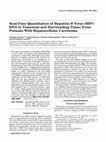
Journal of Medical Virology, 2002
Few data are available on the levels of HBV DNA in liver tissue of patients with hepatocellular c... more Few data are available on the levels of HBV DNA in liver tissue of patients with hepatocellular carcinoma. In this study, HBV DNA was quantitated by a TaqMan real-time PCR method and results were normalised to an endogenous reference gene. The assay could detect reproducibly viral sequences from over 10 7 to less than 50 copies/mg of liver DNA. The HBV DNA content in liver samples from 11 HBsAg-positive patients (median: 10 5 copies/mg of DNA) was significantly higher (P < 0.001) compared to the viral DNA concentration detected in liver samples from 15 of 25 HBsAg-negative patients (median: 2.6 Â 10 2 copies/mg). A liver DNA amount !1 HBV DNA copy per cell was detected in half of tissue samples from HBsAg-positive patients, and in none from HBsAg-negative ones. Liver tissue HBV DNA content was significantly higher in anti-HCV-negative than in anti-HCV-positive cases (P < 0.001). These results show that the quantitation of liver HBV DNA by real-time PCR can be useful to understand HBV state in hepatocellular carcinoma and viral interplay in patients with multiple viral infections.
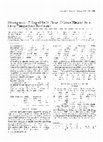
Journal of Medical Virology, 1995
Immunological and genomic analysis of the "a" determinant was carried out in seven patients with ... more Immunological and genomic analysis of the "a" determinant was carried out in seven patients with concurrent HBsAg and anti-HBs, four of whom were immunized against hepatitis B virus at liver transplant, two with histologically characterized chronic hepatitis B virus infection, and one HBsAg healthy carrier. The immune reactivity of the HBsAg "a" determinant was evaluated by binding to specific monoclonal antibodies, and the corresponding genomic sequence was studied by differential hybridization in microtiter plates and nucleotide sequence analysis. A double mutation generating an amino acid change (glycine to lysine) at residue 145, able to impair recognition by monoclonal antibodies, was observed in the post-transplant serum from one patient. No significant alteration of the "a" determinant sequence or reactivity was detected in the other patients.
Journal of Medical Virology, 1999
Forty-four anti-HIV seropositive pregnant women were enrolled in a study of maternal factors rela... more Forty-four anti-HIV seropositive pregnant women were enrolled in a study of maternal factors related to mother-to-infant human immunodeficiency virus type 1 (HIV-1) transmission. HIV-1 infection was documented in 11 of 45 infants (24.4%). Obstetric factors, maternal CD4 counts, and disease stage were not related to the risk of transmission. HIV-1 RNA levels at delivery were significantly higher in mothers who transmitted the infection (P = .024). A strong relationship between viral load and risk of transmission was observed in women with stage A1 (P = .006), but not in those with stages A2-A3. These results suggest that vertical transmission of HIV-1 is multifactorial and that viral load plays a major role in mothers with early-stage HIV-1 infection.
Journal of Medical Virology, 1998
Seventy babies were monitored for at least 6 months. HCV infection was diagnosed in six infants (... more Seventy babies were monitored for at least 6 months. HCV infection was diagnosed in six infants (8.6%), four of whom were born to anti-HIVpositive mothers. HCV RNA was first detected between 2 and 6 months, and the genotypes of infected babies matched those of their mothers ...

Journal of Medical Virology, 1990
Some chronic HBV carriers have circulating HBV DNA despite the presence of anti-HBeAg antibodies.... more Some chronic HBV carriers have circulating HBV DNA despite the presence of anti-HBeAg antibodies. This observation has recently been related to the presence, in the HBV pre-C region, of a translational stop codon that prevents HBeAg synthesis. In the present study, we analyzed, at the nucleotide level, the pre-CIC region of HBV isolated from the sera of 11 anti-HBe, HBV DNApositive chronic carriers. Nucleotide sequence analysis of 25 independent clones revealed that the pre-C sequence is highly variable, even among clones derived from the same serum sample. Moreover, our data show that HBeAg synthesis can also be prevented by as yet undescribed T-C substitution at position 1815 that eliminates the start codon of the pre-C transcript. These results suggest that the HBV genome contains segments of high variability that have probably been selected during evolution t o favor the segregation of functionally advantaged mutants capable of avoiding host immunity.

Journal of Medical Virology, 2002
Sera from 30 women at high risk for infection, one half of which were SEN virus positive (SENV ),... more Sera from 30 women at high risk for infection, one half of which were SEN virus positive (SENV ), were collected at delivery to study SENV motherto child transmission. Thirteen of their babies were positive for at least one SENV strain: one baby was SENV at birth, eight became positive within 6 months from delivery, and four became positive in the following months. Our data indicate that vertical transmission of SENV does occur, presumably, at delivery, but it may not induce persistent viremia. This is supported by the fact that, generally, SENV is not detected at birth, by the high SENV homology in the sequences found in the mothers and in their children, by a lack of other risk factors for infection of the babies, and by the irregular detection of SENV in the follow-up. No clinical events surely linked to SENV infection were found, but transient elevations of alanine aminotransferase were observed in babies followed for a long period of time.
Journal of Medical Virology, 1996
A zyxwvutsrqpon case of simultaneous infection with HIV and HCV characterized by a rapidly progre... more A zyxwvutsrqpon case of simultaneous infection with HIV and HCV characterized by a rapidly progressive clinical course was studied retrospectively over 3.5 years. Molecular analysis indicated interference between HIV and HCV and between HCV subtypes la and 1 b. An ineffective immune response was suggested by the persistence and sequence conservation of the HCV HVRl variants isolated during the follow-up. o 1996 Wiley-Liss, Inc.
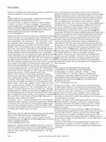
Journal of Hepatology, 2010
Recent studies have analyzed the influence of host immunity on cancer prognosis. Tumor-infiltrati... more Recent studies have analyzed the influence of host immunity on cancer prognosis. Tumor-infiltrating CD3+ T cells are strongly associated with favourable prognosis in several solid malignancies. The main aim of this study was to test the prognostic value and phenotypic characteristics of tumor infiltrating lymphocytes (TIL) within resected HCC nodules. Methods: HCCs from 30 patients with a mean follow-up of 4.5 years were evaluated for morphology by histological parameters (grade, vascular invasion, type of growth, nuclear cytoplasmic ratio, semiquantitative evaluation of lymphomonocytic infiltrate, Betacatenin expression, etc.), for expression of immunologically-related (CD45, CD8, FoxP3, Granzyme-B, IFN-gamma, PD-1, PDL-1) as well as fetal and staminal genes (AFP, IGF2, VIM, CK7, eCadherin, EpCam) by mRNA analysis and finally for phenotype and function of T and NK cells on isolated lymphomononuclear cells (cytokine production upon mitogen situmulation) by staining with a large panel of monoclonal antibodies. Patients were divided according to disease recurrence before and after 12 months and significantly different parameters (Mann Whitney and chi-square for morphological scores) were further evaluated for their prognostic relevance (disease free survival -DFS) by Kaplan Meier curves. Results: CD3+ and CD4+ T-cells by flow cytometry and lymphomonocytic infiltrate by histological scoring were significantly more represented in patients with no disease recurrence at 12 months while larger HCC size and vascular invasion were significantly associated with disease recurrence. However, when Kaplan Meier curves were applied, CD4+ T-cells (p = 0.01) and lymphomonocytic infiltrate (p = 0.03) appeared as the only significant predictors of DFS. Interestingly there was a positive correlation (Spearman rank correlation test) between lymphomonocytic infiltrate and expression of fetal markers (IGF2 and AFP). Moreover, even if frequency of CD4CD25FoxP3 Treg cells did not significantly impact on DFS, it was inversely correlated with CD4+ and CD8+ T-cells function (IFN-gamma, TNF-alpha and IL-2 expression upon mitogen stimulation). Conclusions: Even if several histological and immunological parameters were evaluated, intratumoral lymphocytic infiltrate and in particular CD4+ cells were the main predictors of disease free survival. Further qualitative analysis of infiltrating T, NK and NKT cells will provide insights into the mechanisms of tumor immunity in patients with hepatocellular carcinoma.






Uploads
Papers by Elisabetta Cariani